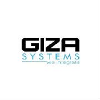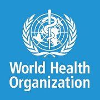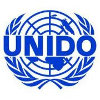Duties and Responsibilities
Organizational Setting UN-Habitat, the United Nations Human Settlements Programme, is mandated by the UN General Assembly to promote socially and environmentally sustainable towns and cities. It is the focal point for all urbanization and human settlement matters within the UN system. Introduction The project Strategic Urban Planning for Small Cities was initiated in 2010 between the General Organization for Physical Planning and UNHabitat Egypt Country Programme. The first and second phases of the project took place between 2010 – 2021. Phase I and II implemented strategic urban plans (SUP) for 70 cities located in 13 governorates in Egypt and included technical support to GOPP local units on SUP. The third and final project phase being implemented between 2021-2024 focuses on implementing and updating SUPs for small cities and cities of a special nature (cities with a distinctive geographic location, e.g. cities bordering on coasts or with a distinctive urban character or history...etc). Phase III aims to strengthen the national capacity for sustainable urban development and management, as well as establish improved inclusive urban planning processes and methodologies for the preparation of SUP. Currently, GOPP seeks to align the state’s efforts on achieving Egypt’s Sustainable Development Goals (SDGs) and Sustainable Development Vision 2030, including achieving social justice and improving the quality of life and urban environment through preparation and updating of impactful urban plans in Egyptian cities. In line with this objective, GOPP works on updating the previously prepared cities’ General Strategic Urban Plans (with reference to law 119 f year 2008), to ensure that the strategies and projects proposed remain effective and respond to the social, economic, environmental and spatial current contexts and challenges. These plans take also into account any changes and national directions in projects and their impact on urban agglomerations, most importantly the New National Urban Policy and new urban upgrading approaches key directions. As such, the GOPP and UN-Habitat are working together to update al-Tor City’s Strategic Urban Plan (SUP) (target year 2045) and promote the City’s unique character and natural resources in accordance with; the Sustainable Development Goals (SDGs), National Urban Agenda (NUA), Egypt Vision 2030, and results of the Egypt National Urban Policy (NUP), and the regional development plan for South Sinai. This alignment will further complement proposed regional and international projects that may impact the city. The plan shall consider the city’s unique character, to enable the city to fulfill its national and regional roles effectively, provide an improved quality of life for its current and future residents and respond to the city’s local potentials and anticipated population growth. In this context, as a part of updating the SUP for al-Tor City, this task aims to study, analyse and propose priority sector specific projects in coordination with the Regional and Local Economic Development consultant for the investment plan for projects identified with regards to the city’s infrastructure and environmental aspects. This will encompass road networks and transportation, traffic studies, drinking water supply and sanitation, electricity, energy and communication, geotechnical and hydrological studies, marine environment, and environmental planning, environmental impact assessment as well as solid waste. See annex 1 for the comprehensive To R that includes all sector related deliverables for alignment. Study area: Al-Tor City is the capital of South Sinai Governorate and includes the most significant administrative centers and services in the governorate. It is located in South Sinai approximately 265 km from the Martyr Ahmed Hamdi Tunnel on the Gulf of Suez. The city is surrounded with prominent tourist destinations such as, Dahab, Sharm El-Sheikh, St. Catherine, Ras Sidr and Ras Abu-Rdis cities. Additionally, it is particularly known for its significant historical and touristic character with natural attractions and historical monuments from both the Mamluk and modern era. Moreover, it is known as a medical tourist destination given its many attractions that include Hammam Musa and Ras Raya beaches, which are characterized by their coastal nature. Reporting Line The Consultant will work under the supervision of the UN-Habitat Program Manager and in coordination with the Programme Manager at the General Organization of Physical Planning (GOPP). Duties and Responsibilities This study aims at contributing effectively to updating Al-Tor City’s SUP. The infrastructure consultant will be responsible for developing and coordinating a study with regards to the following sectors; road networks, transportation, traffic studies, drinking water supply and sanitation, electricity, energy and communication, geotechnical and hydrological studies, marine environment, in addition to environmental planning, environmental impact assessment and solid waste management. See annex 2 for the tools that will be used by the consultant in each sector for analysing and updating the SUP. Task 1: Project preparation and introduction • Identifying the relevant development partners and stakeholders (including local administration, government agencies involved in City planning, local community representatives, residents, grassroots leaders, universities, businessmen and active entrepreneurs, including major investors active in the city’s economy, non-governmental organizations, and trade unions), (See annex 2 for use the relevant stakeholder identification and analysis tools); • Preparing a sector specific action plan including detailed tasks and timeline, and a detailed timetable including workshops together with their dates, locations and targets; • Identifying relevant available sector specific studies, data and information on existing or ongoing services and projects, or those for which an allocation decision has been issued by governors, and the required city surveys; • Forming a local team from the different relevant authorities; • Contributing to the introductory meeting with the Governorate for the specified sectors coordination with the Urban Planning consultant as well as the Regional and LED consultant consultant. The meeting will be coordinated by the GOPP with the presence of sector specific representatives from the GOPP and the project lead consultant, as well as representatives from the governorate and the corresponding local authorities and key stakeholders. The meeting will aim to discuss the objectives, phases and project results as outlined in the To R; • Holding an introductory meeting at the city council to introduce the project, discuss with development partners, and identify existing sector specific capacities and expectations (from all entities whether financial, institutional, or technical in addition to existing lands available for development). Task 2: Sector specific situational analysis of the city 2.1 Regional framework and review of previous studies: • Reviewing sector specific current and future government plans and strategies related to the development of the city and its regional surroundings with regards to road networks, transportation, traffic studies, drinking water and sanitation, electricity, energy and communication, geotechnical and hydrological, marine as well as environment; • Studying regional road and transport linkages, infrastructure projects, main stations and functional connections between the city and district, or between the city and the new urban development areas, whether new cities, villages, reclamation areas, desert hinterland, or any major regional projects that includes the governorate where the city is located; • Studying sector specific neighboring development projects and their direct and indirect impact on the city; • Reviewing most recent satellite images of the city (see annex 2: tools that illustrates the technical specifications of satellite image) and maps available by the specialized administrations in governorates and the Spatial Changes Unit; • Reviewing previous studies and the approved General Strategic Urban Plan of the city and identifying the list of projects and proposed programs in the urban plan related to the identified sectors (road networks and transportation, traffic studies, drinking water supply and sanitation, electricity, energy and communication, geotechnical and hydrological studies, marine environment, and environmental planning, environmental impact assessment as well as solid waste); • Identifying sector specific implemented and ongoing projects, together with projects that were not implemented and proposed in the previous plan and the reason for not being implemented through field visits to the city; 2.2 Situational analysis and the identification of sector-specific issues for updating • Situational analysis to identify sector-specific changes or new developments that took place since the preparation of the approved General Strategic Urban Plan (road networks and transportation, traffic studies, drinking water supply and sanitation, electricity, energy and communication, geotechnical and hydrological studies, marine environment, and environmental planning, environmental impact assessment as well as solid waste); • Determining the impact of new sector-specific changes on the city’s approved General Strategic Urban Plan and the issues that will be addressed in the updating process at the level of the whole city or parts of the city. Sector-specific changes should be mapped to feed into the updated Strategic Urban Plan. There should be a focus on identifying changes related to the methodology for urban upgrading and inputs from NUP as well as cross-cutting issues, and the inputs from healthy sustainable cities; • Conduct a SWOT analysis to identify sector specific main strengths, opportunities, challenges and threats; • Preparing environmental studies from the strategic environmental assessment perspective, taking into account the objectives, policies and implementation plan and the main environmental issues and risks, according to the city’s location in its broader regional scope. This should result in the identification of the most important recommendations and necessary strategic interventions which would be used to help direct urban growth patterns of the city. • Mapping areas/locations in the city that suffer from traffic pressures and areas that need future development contributing to the definition of urban development and upgrading areas through assessment of sector related indicators. • Updating the City’s infrastructure and environmental database (The situational analysis data to build a GIS for the city and new extension will be shared); • Defining city’s Infrastructure & transportation network indicators, and environmental & natural indicators to support evidence-based decision-making at the city level and reporting on the progress towards achieving the SDGs, (especially Goal No. 6, 11, 13). Implementing the New Urban Agenda and developing healthy cities through the Q&A implemented with different stakeholders and data collected from previous studies as well as, reports prepared by all involved entities (city, governorate or region, and in some cases central bodies). Provided that these indicators complement the results of the updated and collected sector specific data (referred to in Annex 2). 2.3 Proposed directions for updating the City’s sector specific plans • Updating the objectives provided in the city’s approved General SUP for specified sectors as well as reviewing and updating the city vision in coordination with the urban planning consultant and comparing them to the current sector specific situational analysis. To align the update of the SUP based on the identification of urban development areas and priorities, and specifying the developmental role of the city in light of reviewing the current circumstances and the National Urban Policy (NUP); • In coordination with the Urban Planning consultant and the Regional and LED consultant, the Infrastructure and Environmental Consultant will study the city’s proposed policies within the framework of the NUP in the defined sectors, as an input to the process of preparing the sector-specific contributions for SUP for the city in question. If there are any proposed amendments to city’s role or pre-defined policies that are sector specific, the consultant shall submit such proposals, including all the relevant information, to the contracting entity for review and approval before it is used in preparing the SUP; • Assessing sector specific situational analysis results and proposing method(s) for tackling the city’s current and expected sector specific issues; o Roads, transportation and traffic projects o Infrastructure projects (drinking water and sanitation, electricity, energy, solid waste); o Assessment of environmental potentials and risks, and proposed mitigation approaches and related projects; • Main decision and proposed sector specific initial directions (updated) for the specified sectors; • Coordinating with the Urban Planning consultant to achieve integration between different uses and activities at the city level; Task 3: Updating the city’s sector specific plans to feed into the City’s SUP 3.1 Urban Development Plan • Updating the city’s previously approved General SUP with sector specific plans including an infrastructure and environmental plan that matches land uses. Plans include road networks, traffic, transportation, drinking water and sanitation, electricity, energy and communication, geotechnical and hydrological, marine as well as environment and locating them on identified urban development and upgrading areas as defined by the Urban Planning Consultant; Identifying the sector specific current and future needs and setting a timeline for priorities for the proposed projects up to the target year; • Identifying sector specific regulations and specifications. 3.2 The investment plan and its implementation mechanisms at the city level (see annex 2: tools): Identifying and localizing sector specific priority projects in close coordination with the Regional and LED consultant and analyzing their impact on the city’s projected population and their initial impact on the city vision, environment and local economy, as follows: • Programmes and projects for road networks, transportation and traffic; o Programmes and projects for the supply and extension of infrastructure and utilities (drinking water and sanitation, electricity, energy, solid waste); • Programmes and projects for environmental development. 3.3 Indicators for Monitoring Implementation: Identify the main monitoring sector specific indicators for the implementation of programs and projects in the Strategic Urban Plan and data collection frameworks, where the most important are listed as follows: • Monitoring indicators for the implementation of priority programmes and projects of road netoworks, transportation and traffic; • Monitoring indicators of supply and extension of infrastructure • Monitoring indicators for strategic environmental assessment of the city and its development projects. Important Considerations This task will be conducted in close coordination with key identified stakeholders including: • The General Organization for Physical Planning (GOPP); • The Regional Center of the General Organization for Physical Planning; • Local administration: governorates and city councils; • Ministry of Planning and Economic Development and international cooperation. • The directorates representing each ministry in the governorate of the city in question; • National institutions and companies (incl. road networks, transportation, traffic, water and sanitation, electricity, communications, gas, etc.); and • Civil society institutions and representatives. • Regional and LED consultant as well as Urban Planning consultant As explained in annex 1: comprehensive To R, it is necessary to work in effective and practical partnership with all parties participating in the planning process. This is as per the General Planning Law No. 18 of 2022, which emphasizes linking sectorial plans with spatial plans and obliges the ministries and concerned authorities to do the same.























